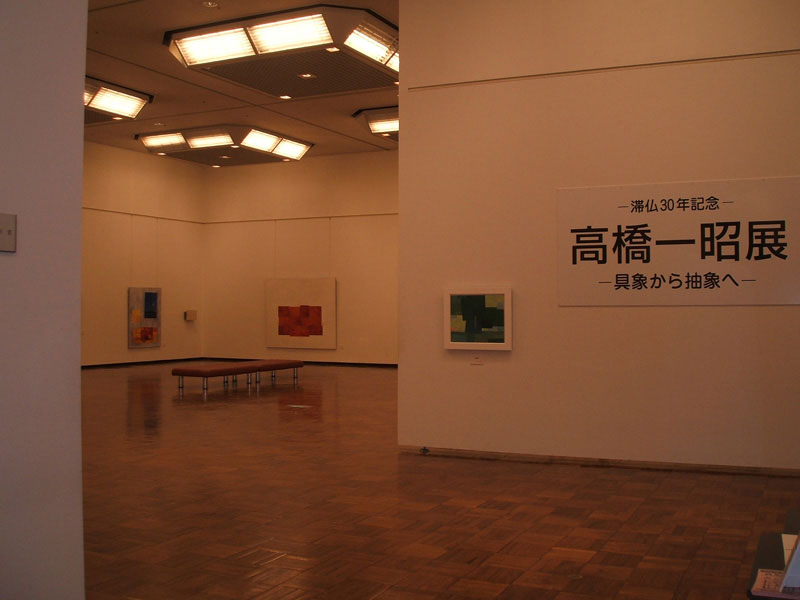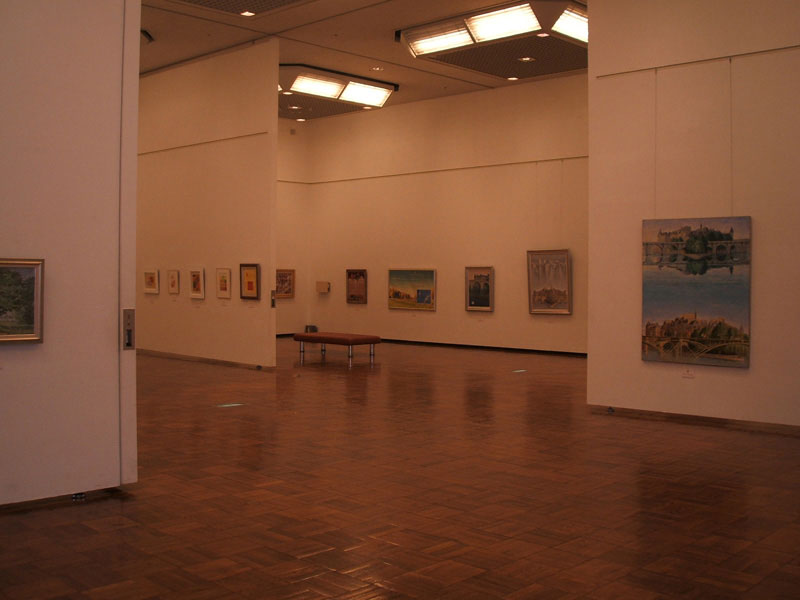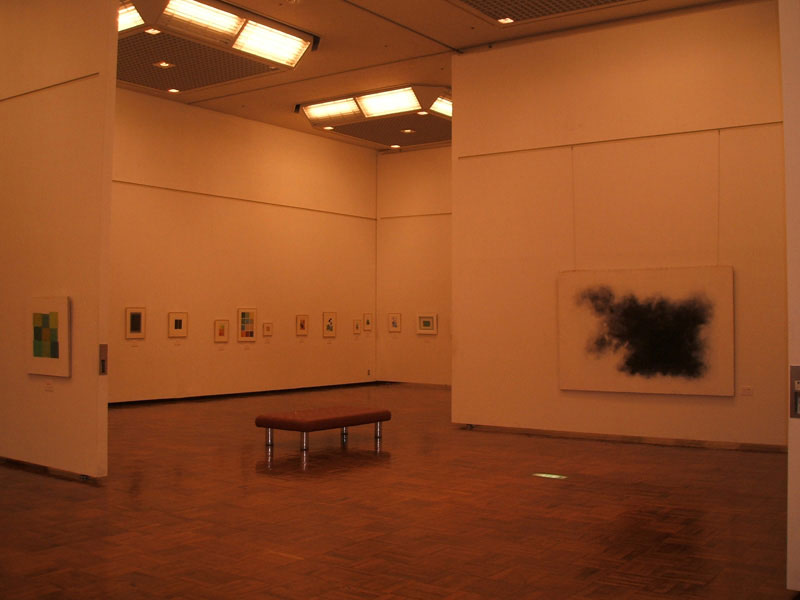Exhibition at the Tsukuba museum
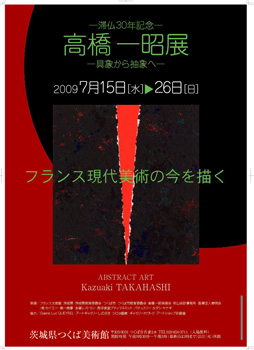
July 15th, 2009
Exhibition dedicated to his 30 years of activity in France.
Kazuaki TAKAHASHI’s lyrical abstract art work
Kazuaki TAKAHASHI has been living in France for 30 years. He came to this country in 1979 when he was 20. Thirty years may sound like nothing, but it must have meant difficulties of all sorts. However, you cannot feel it throughout his artistic work.
German expressionism shows the painter’s wounded soul and anguish in an intuitive way; dark or primitive colors writhe on the canvass. Kazuaki TAKAHASHI’s work is totally different. On the contrary, it is skillfully elaborated and you can even detect a kind of musical or mathematical shape. At the same time, they are full of tenderness and intimacy.
In my opinion, Kazuaki TAKAHASHI is, among Japanese painters (for example Shikanosuke OKA, Kiyoshi HASEGAWA or even Shizuka MURAYAMA who comes from Ibaraki and who presently lives in France), the best representative of that characteristic French tradition which can be found for example in the best works of Henri MATISSE or Pierre BONNARD.
Yet this intelligence and clearness never make Kazuaki TAKAHASHI’s work cold. On the contrary, they are somewhat delicate, sensitive and even frail. The fragility of beauty is an element always structuring Kazuaki TAKAHASHI’s works. His favorite hue is the green melody; a green which can range from a deep quiet blue to a pale light yellow. He also uses hues ranging from yellow to orange: they suggest autumn harvesting. “Forest Breath” (2004) displays this first aspect and “Autumn Spirit” (2008), the second aspect.
But Kazuaki TAKAHASHI also has painted one work named “Spirit Field” (2008) representing a rigorous spiritual world by means of a chessboard shading from black to white, with blue and violet hues and surrounded by a large black strip. However the delicate hues, such as greyish pale blue or greyish pale violet, do not make this world monochromatic.
The painter sets his sights on the expression of human spiritual strictness. On the other hand, with his lyrical and abstract works, he softly brings out the harmony of several colors (green, yellow and orange), gathered in nature by the painter himself.
Another group “The Poet’s Soul” (2008), “Revelation” (2007) or “Awakening” (2008) is composed from the same choice of colors: dark blue, bluish grey almost black with just a red and irregular line appearing among these dark colors.
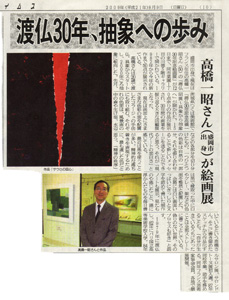
These obscure and deep paintings are conducive to contemplation. They are meditative and mystical and suggest eastern philosophy. The beholder might feel he is standing in front of a foreboding door. Yet, they give a feeling of peacefulness and not of harshness. This is indeed the specificity of Kazuaki TAKAHASHI’s work.
If you look at his work in chronological order, you will find that he did not go from painting from nature in shades of green, blue and yellowish orange to painting mainly with dark, spiritual and contemplative colors. His creation evolves in both of these worlds, on parallel and polyphonic tracks.
In a state of constant meditation, you sometimes need to take a breath of fresh air by getting back to nature so as to avoid the impression of being stifled. I think that Kazuaki TAKAHASHI’s works show precisely this balance and quiescence.
It is not surprising therefore that the painter has produced works such as “Origin of the Forest” (2008), full of freshness, as well as works in the manner of “The Poet’s Soul” or “Awakening”, philosophical and metaphysical. His figurative paintings and his abstract work combine simultaneously several worlds. The titles to his works prove that the painter is also a poet, weaving between the world of words and that of painting.
“Origin of the Forest” holds within itself all these artistic elements. This work suggests the swaying leaves in the breeze as well as the sun rays playing with shadow and light. Moreover, vertical strips like white keyboards, set up a natural rhythm, suggesting a line of trees. You could easily get the feeling that we only remember natural spaces when they are divided up into window frames. Each of us can read the painting in our own way.
Kazuaki TAKAHASHI’s abstract works are generally not difficult to understand. They suggest delicately and sincerely a lyrical and fresh universe, meticulously composed. The titles themselves are carefully chosen and suggest the intimate world of his poetical reveries. They bring to mind ideas both pictorial and poetic which work harmoniously together.
Besides his painting, Kazuaki TAKAHASHI writes down all his thoughts in notebooks showing in this way his particular attention to detail and his discipline. These notebooks, covered with minute letters and thick with notes, are art works themselves. Very few contemporary artists follow this example. They remind us of Leonardo Da Vinci’s famous notebooks, which Kazuaki TAKAHASHI is very much interested in.
Kazuaki TAKAHASHI is probably not well known enough in Japan. This first and important retrospective exhibition, including the majority of his recent works, has been realized by Japanese and foreign admirers. I sincerely wish that this exhibition will be a success as it is an important opportunity to give the general public access to his painting.
Rikiei FUNAKI
Curator of Ibaraki Modern Art Museum




